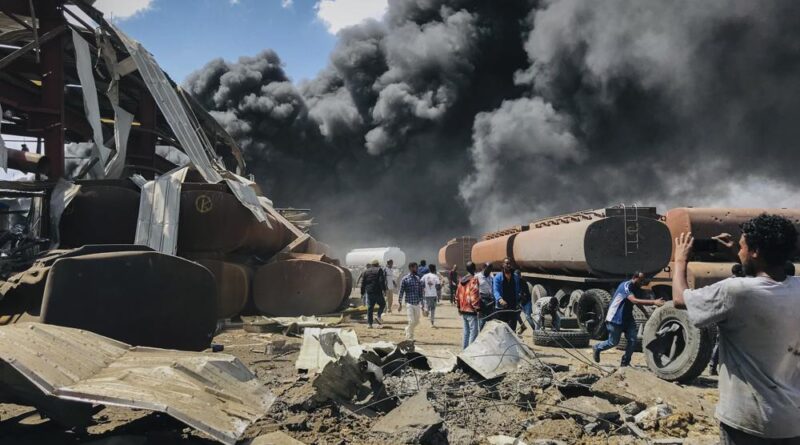Why Is Ethiopia at War With Itself?
The civil war has shifted dramatically since Prime Minister Abiy Ahmed began a military campaign in the Tigray region a year ago. With Tigrayan fighters advancing toward the capital, Ethiopia is at risk of collapse.
After a year of conflict that has left thousands dead, forced more than two million people from their homes and pushed parts of the country into famine, the tide of the civil war in Ethiopia has shifted heavily in favor of the rebel forces.
Fighters from Ethiopia’s northern region of Tigray and their allies are pressing south toward the capital, Addis Ababa, after driving government troops from Tigray in June.
Led by the Tigray People’s Liberation Front, rebel fighters captured two key towns on the main highway leading to Addis in late October. Prime Minister Abiy Ahmed appealed to citizens to take up arms to block the fighters’ advance, which he said was “pushing the country to its demise.
On Nov. 2, the government declared a state of emergency, reflecting the rapid escalation of a war that threatens to tear apart Ethiopia, an American military ally, and further destabilize the volatile Horn of Africa region. Over the past year, there have been reports from witnesses, many confirmed by a U.N.-led investigation, of massacres, widespread sexual violence and other human-rights violations.
Here’s a look at how Tigray became a flash point in Ethiopia and the broader region.
Why did Ethiopia’s prime minister begin an offensive in Tigray?
Even before the war, Mr. Abiy appeared bent on breaking the power of the T.P.L.F., a political group of rebels turned rulers who had dominated Ethiopia for nearly three decades.
A former intelligence officer, Mr. Abiy had once been part of the T.P.L.F.-dominated government. But after he took office in 2018, he set about draining the group of its power and influence in Ethiopia, infuriating the Tigrayan leadership.
The T.P.L.F. retreated to its stronghold of Tigray in the mountainous north of Ethiopia. Tensions grew. In September of last year, the Tigrayans defied Mr. Abiy by going ahead with regional parliamentary elections that he had postponed across Ethiopia, citing the coronavirus pandemic. Weeks later, Ethiopian lawmakers cut funding to the region.
A year ago, T.P.L.F. forces attacked a federal military base in Tigray and tried to steal its weapons. The group has said it struck preemptively because federal forces had landed in a neighboring region days earlier in preparation for an assault.
Hours later, Mr. Abiy ordered a military offensive against the Tigrayan leadership and its security forces.
The government restricted internet and phone communications and declared a six-month state of emergency in Tigray. But the Ethiopian military, which was dominated by Tigrayan officers, was divided, and fighting erupted between rival units inside the region, according to American officials.
Mr. Abiy bolstered his forces by deploying militia fighters from Amhara, south of Tigray, who swept into western Tigray amid accusations of attacks on civilians. Then troops from Eritrea, Ethiopia’s former enemy, flooded across the border into Tigray from the north to fight alongside Mr. Abiy’s forces.
Federal forces and their allies quickly seized control of Tigray’s regional capital, Mekelle, and other towns. But the T.P.L.F. and its armed supporters fled to rural and mountainous areas, and Mr. Abiy found himself drawn into a military quagmire.
The Ethiopian military suffered a major defeat in June when it was forced to withdraw from Tigray, and several thousand of its soldiers were taken captive.
As rebels advanced on the capital, Addis Ababa, in early November, Ethiopia declared a state of emergency. The government called on its citizens to pick up arms and prepare to defend the capital.
The Tigrayans have joined forces with another rebel group — the Oromo Liberation Army — during their advance, and foreign officials monitoring the fighting said there were signs that several Ethiopian Army units had collapsed or retreated.

